Episode 3: Coming Back Stronger with Rannveig Aamodt
Photo by Nathan Welton
Very excited to bring this talk to you! In this episode I sit down with my good friend Rannveig Aamodt, a Norwegian climber and model, and talk about her impressive road to recovery after a terrible accident. In 2012, she took a 50 foot ground fall in Turkey, with only herself to blame. We go deep into how that affected her mentality and her psyche to return to climbing, and to physical activity in general. Rannveig does an amazing job of putting into words the process and methods that she used to get back on lead, and now she's back to climbing even harder than she did before the accident. So many people will find not only inspiration, but new methods to use in their struggles with fear - be it fear of falling, of failure, of the unknown, or whatever.
Find Rannveig online:
The story we reference in the talk.
Gallery of rehab photos from Nathan Welton.
And this is the single image that I find so compelling, that says so much about Rannveig and her spirit.
Photo by Nathan Welton
Like what you hear? Subscribe to The Power Company Podcast on ITunes, Google Play, or Stitcher Radio, and leave a rating and review!
FULL EPISODE TRANSCRIPT:
Kris Hampton 00:33
What's up everybody, I'm your host, Kris Hampton. And welcome to Episode Three of the Power Company Climbing Podcast brought to you by powercompanyclimbing.com. We just launched our new site, which I am excited about, largely because working on something that no one can see seems a little pointless sometimes. And I am not a computer guy, and it drove me a little insane. So I'm glad that's out there in the world. Go check it out. It's got all of our training options up there, we'll have apparel up soon, I actually have it in boxes, I just haven't taken photos of it and put it on the interwebs yet. So that'll be there soon. We're always creating new content. Nate's got some blogs that he's working on that I'm excited to get up there as well. So go check that out. And you can also find us on Facebook, Instagram, Pinterest, anywhere you are on the interwebs except for Twitter, because frankly, I can't stand Twitter. I don't understand it, it drives me a little crazy. And I choose not to use it. So everywhere else you are on the interwebs, @powercompanyclimbing, find us. So ironically, I got up early this morning thinking I was going to be extra super productive. And I got about two minutes of work done and the power went out. Yeah, ironic. No power here at the Power Company. And I'm currently sitting here waiting for the other power company to turn the power back on. So... but I have battery power. So take that establishment, you can't win this one. And hopefully my batteries don't die while I'm doing this. So we'll see. Anywho, I'm really proud of the interview that we've got today. You'll probably hear me say that again in the future, because frankly, I'm proud of everything I put out there or I just wouldn't put it out into the world. But this one really is special. I sit down with a good friend of mine, who actually does some coaching through the Power Company, and in Estes Park this past summer: Rannveig Aamodt. She is a Norwegian climber, who you've undoubtedly seen. Her husband Nathan Welton is a really talented, brilliant photographer. And Rannveig just happens to be gorgeous, and a strong rock climber so that makes for good photos pretty much all the time. So you've seen her. What we talked about is an experience Rannveig had in Turkey in 2012. She made a mistake at the anchors of a route and took a 50 foot ground fall that resulted in some pretty horrific injuries, and we talk about her road to recovery. One thing we don't talk about is exactly how the accident happened. And I'm not going to try to explain it because I'm afraid I would just confuse you even more if you're confused about it. So if you really have to know you can go out onto the interwebs. And I'm sure you can find the details of it. It's a, it's a pretty complicated mistake to make. But pretty simple for it to happen, I think. So anyway, we're not going to talk about that because I don't want to be responsible for confusing you. Several times in this interview, I reference a story that Rannveig wrote about the accident on her blog, and you'll be able to find links to that, to the image that I talk, about and anything else that I reference, on the show notes page, which you can find at powercompanyclimbing.com, click on the podcast link. But I want to get this started by reading an excerpt from Rannveig's story. And this is actually an excerpt from her husband Nathan's diary from that day. And this particular passage just really touched me the first time I read it and stuck with me. So after I, after I read this, we'll just jump right into the interview. "I can still see her falling in a sitting position with outstretched arms that made small clockwise circles, like a bird falling from the nest. I can still feel my intestines knotting up as the rope failed to come taut with each new meter she plunged. She made a surprised noise, the same sound she'd make when she dropped a plate or fumble with her keys. And I can hear the nauseating thud of impact, the cracks of snapping bones and tearing flesh, the breathless, powerful echo of my voice as I screamed for help into the empty pastures below. I can still smell her blood as it poured from her head and into my hands, soaking my clothes, and flowing down the limestone. I remember slipping in it, unable to steady myself as I tried to stabilize her spine. I remember the feeling of the blood drying on my skin, tugging at my hair every time I moved my arms or legs. I kissed her forehead and the blood dried in my beard and I was reminded of it as I cried because my face contorted and it pulled on my whiskers. And eagles circled overhead and the air was still. But I felt like all the world's chaos and violence had landed on my shoulders. Everything had suddenly become so unbearably loud. I remember the primal metallic taste of fear. She had bones coming out of her ankles, out of her elbow, and both her feet were grotesquely twisted 90 degrees to the side. She was paralyzed from the waist down. Her hip was broken. Her back was broken. Her feet were broken, her teeth were broken. And she had a deep bloody gash on her head. She was shrieking into that blazing Turkish sun. 'Where am I?' she cried, 'What happened?' I told her to breathe in the pain, thankful that she was, at that point, still alive. I didn't know what to do with so much trauma. And I didn't know if she was bleeding to death on the inside. So I just cradled her head and held her hand and wondered silently as she screamed if this was how I was going to lose my wife. If this is how it would all end, like a scene in a movie, looking into her big blue eyes as their life slowly moved away and they closed for one final time."
Rannveig Aamodt 07:08
But the training part, like the fight - that happened, like I think almost immediately when I woke up in the hospital. It was like, it was.. yeah, I just needed, I needed to know that I did everything I could do. Okay, so you were just saying that it sometimes it's hard to, to remember how it felt like it's, it's kind of, to go back to that place. So let's talk a little about that. Yeah. Yeah, like, yeah, it can be hard to like, remember how I actually felt. Like I don't wanna like, if I'm gonna explain what happened, I don't want to, like make it sound like a, like a, like nicer than it was. And sometimes it's hard to like, tap into, like, how it actually was and not just make it like "Oh, yeah, I recovered, everything is good now." And yeah, like through the whole process, it could be kind of hard actually to, to tell people how I actually felt because you want to say that everything is good. You want to be positive. You want to, like yeah, this is... Yeah, I'm doing better. But like, a big part of you is still like, "No, it sucks!" It's, yeah, and you're dealing with a lot of pain and dealing with a lot of like issues that would hurt sometimes.
Kris Hampton 08:57
Yeah. So and it was a pretty, I mean, it's a hugely inspirational story to a lot of people and, and it was pretty heavily publicized. And your husband Nathan, who's an amazing photographer took, took these really great photos of the the rehabilitation process and and you wrote this great story and his, his part of your story that he wrote really sticks into my head, I think about it pretty often actually. So do you think it being as as publicized as it was - even though it was you doing a lot of the the publicizing it because it is such an inspirational story - do you think that kind of leads your memory to different places than it might have otherwise been?
Rannveig Aamodt 09:48
I've been like really conscious about that the whole time trying to like, make it like, make it real, like tell people how it was and... Like you want to, like in the middle of the process you... I wanted to, I wanted to stay positive, I wanted to like not, like go into these deep places sometimes so... Yeah, yeah, it's hard. And so you like, you want to tell people that you're great. You want to like, make it sound good because that's what you want to tell yourself, that's how you want it to be. So it's kind of like..
Kris Hampton 10:37
Right, if you put that out there, maybe that's what's actually going on.
Rannveig Aamodt 10:39
... what's actually happening. But the whole time I've been trying to not make it sound like better or easier than it is. Because, like, talking about it has been a good way to feel that I can give something back. I like received so much help through this whole process, and like, and I know how I felt that I was like reaching out and trying to find other stories that were similar. There's so many unknowns and you're like really seeking for, for help when you're in the situation. So I feel like what I could do now is to be that for other people who are in the same situation and, and I've received a lot of feedback that I'm helping many people out there and I'm sure, I'm sure there are people everywhere who are are getting inspiration from it. I am for sure. You know, I'm going through a shoulder injury right now that's incredibly minor compared to what you went through. And, and that definitely is a source of strength and inspiration for me. What, what exactly were the injuries that you had? Can you even list them all? It was quite a mess. So yeah, I took the fall, I landed with my, my legs bent, so... So you landed on your feet? I landed on my feet, like almost like as if I was in a chair, sitting in a chair. So I kind of like saved my knees, but my ankles took like basically the whole fall so I shattered my ankles. I was kind of like a mash of bones and tendons ripped off the the bones and nerves. It's kind of like a porridge of bones and tendons. And then so yeah, a lot of fractures in the ankles. The talus bones are broken. And the calcaneus. Yeah, multiple - I think it was like 13 bones in there was affected. My knees were fine. I broke, had like two fractures in my pelvis. And then two, three vertebrae compression fractures in interior vertebrae, all two through four, and then my elbow, the tip of my elbow, broke in three pieces. So did you fall back onto your elbows? So I was like falling and kind of got like a little twist as I hit the ground I think, so my whole like right side got more affected than the left, I kind of fell on my right side, I think so my right elbow got screwed up. Yeah, but I didn't hit my head or anything so I was, I was lucky in a way.
Kris Hampton 13:29
And were you, were you lucid through most of this. Do you... is all this memory or is it... I mean, do you remember the rescue?
Rannveig Aamodt 14:04
Yeah, for sure. I was conscious. I remember. So what I remember is, I remember, like clipping out of the anchor, started falling. I thought that Nathan had like, given me a little bit of slack to give me a like a bonus fall from the anchor or something. Yeah. And then when I felt that I was accelerating I understood that, that something was wrong. And then I don't remember like the middle part of the fall but I remember like, it's like my body remembers the impact of the fall. I don't really like consciously remember but I can kind of like remember the feeling of hitting the ground and then I think I was probably out for like a couple of seconds or something and then, and then I woke up from like people slapping me in the face and asking me questions and, and I remember Yeah, then I remember... it was like in and out of a cloud almost, part of me was like, in this bubble of light and, and knowing that this is, I'm dying now. This is, this is the end. And, but it was like, it was no fear, nothing. It was just like light. And I was okay with it. And then, like as people were talking to me and, and I had this voice in my head telling me like, no, no, it's too early. You're not ready.
Kris Hampton 15:38
Your body's going into survival mode.
Rannveig Aamodt 15:40
Yeah. So then, then I was like, in and out of this stage kind of where like, I felt the pain and everything. And then I'm back again, where I just see the situation from outside of my body almost. I see Nathan, being all scared. And I'm like, Ah, this is a typical Nathan. He's so worried. And then and then back to this, like, crazy pain that I can't like, I don't know if I can describe it even.
Kris Hampton 16:15
Sure, sure.
Rannveig Aamodt 16:16
Like different than anything I've experienced. So they they rescue you, take you to - you're in Turkey, correct? Yeah, I was in Turkey.
Kris Hampton 16:24
Take you to a Turkish hospital? Do you recall the moment where you, where you decided, where you made the decision that you're going to get back? Did that happen in the Turkish hospital? Did that happen after you were you were flown out of there to... back to Norway, right?
Rannveig Aamodt 16:50
Yeah. So yeah, I was, I was in Turkey for for about a week, until I was stable enough to to get back to Norway. They actually came over came from Norway with a private jet airplane. So lucky to be from Norway. Do I remember if there was... you know, one, one thing about this whole experience is that I really got to know how it feels like to be in the moment. Yeah, there is not, there's not a lot of room to to think about other than right now. So it was like, I think it's probably like a survival mode that happens. So it was kind of like the feeling the whole time that I am going to, at one point, I am going to survive this. I am going to go through this, whatever happens. If I lose my legs...
Kris Hampton 18:01
You're still there.
Rannveig Aamodt 18:02
Yeah, that's exactly it. I felt like, pretty right afterward, that I knew just in myself that whatever happens I'm gonna, I'm gonna get out of this, somehow. With legs, no legs. Climbing, no climbing. I still have like, yeah... Yeah, you just your spirit was there, you knew that no matter what was gonna happen physically, that, that you were going to come out of it the other side just fine. Yeah, for sure. And like I'm not gonna say that I was never scared. Of course, like, being active is such a big, big part of my life. And I was like, I was terrified, of course, of like losing all that.
Kris Hampton 18:54
What were the, what were the doctors telling you? And I'm sure that first few weeks it was probably there wasn't a whole lot of prognosis being given because they're still figuring things out and working through things. But when did the doctors start telling you, and what did they tell you, about what your athletic future might look like?
Rannveig Aamodt 19:17
They didn't even want to talk about it. I had so many questions. I was probably like the doctors' nightmare, wanting to know like everything and so yeah, in the beginning, like they were just like, just forget about climbing. Forget about everything right now. You're just so lucky to be alive. So there wasn't a lot of - especially for my ankles - there wasn't a lot of prognosis, because it was, There's so many bones and jelly in there that has to come together and hopefully, hopefully would come together enough so I would be able... they thought that I was going to be able to walk again. And then it was like back and forth a lot. The first, maybe the first, I would say, three weeks to a month, you can have like, even if they put you back together, the bones are back in your body and, and you're screwed back. It's like you can have complications. My talus bone was broken, which doesn't have a lot of blood supply. So like, before things stabilize, you cannot, don't really know if it's...
Kris Hampton 19:43
..like jelly in there.
Rannveig Aamodt 20:29
healing up correctly... correctly. And, and yeah, so you can, if you go online and read about this, you can read all these horror stories, you know, where people have to amputate and...
Kris Hampton 20:39
Yeah, sometimes that's a really bad idea.
Rannveig Aamodt 20:41
Yeah, sometimes that is really bad. It's lucky that your story's out there though, because your story's, a positive story in this internet sea of horror stories. So maybe like, after about a month, I would say I was back in Norway, things started to like, yeah, started to like, stabilize itself a little bit. And I knew that, like, my back was gonna probably not be pain free, or I didn't know if it was going to be pain free, but I knew that I didn't need to, like have any surgery on my back or anything like that. And my pelvis is just, it was just about time for it to grow back. And, and try to do as much as I could to, later on in the process to to make it pain free with exercises. And, yeah,
Kris Hampton 21:33
So there's an image, it might be my favorite image from the whole, the whole photo series that Nathan has, and I don't know if it's everyone's favorite image, but I've looked at it a bunch of times since I've been rehabbing the shoulder. And it's just an image of your arm up above the headboard of the bed, and you're holding two weights in your hand. And, and I don't even think you can see your face in the in the image. It's just your hands sticking up over the headboard. And that image speaks to me of so much resiliency and determination. So what I want to know is, did that determination just gradually happen? Was there a moment where you decided you were going to climb again? And it was going to be better than it was before? Or is that something you you held off on making any big goal and you just waited to see while fighting the whole time?
Rannveig Aamodt 22:39
Yeah, like for the climbing, I was just putting that aside actually honestly as I was having it as a, as a goal and as a motivation that I wanted to get back. But I was also like, ready to, to give it up, I was gonna. But the training part, like the fight that happened, like, I think almost immediately when I woke up in the hospital, I was like, it was, Yeah, I just needed, I needed to know that I did everything I could do to make like this situation that's, to come back. I know that I wouldn't be able to live with myself if I heard like, three years later that I could have done more. If you did more you would like have recovered more.
Kris Hampton 23:27
If you had just worked a little harder. Yeah, yeah.
Rannveig Aamodt 23:30
And that happened. And that happened. Like, immediately. I just knew that. Whatever happens, I'm gonna do the best I can. And I'm gonna have to like, dig deep to find that. And, like, I'm sure like when I asked for those weights, everyone was like rolling their eyes. Like what? She has one arm that you can move and she's gonna lift weights. Yeah, but for me, it was like, I think more than anything, just just a thing to to like, remember who I was. Remember in Israel, like the hospital. Everyone is like, Yay, God, Like, I just wanted to remember where I was basically and and that I was gonna fight hard.
Kris Hampton 24:16
Yeah, see, for me, I went straight to the couch after my shoulder injury and just ate ice cream. Maybe that's because that's who I am.
Rannveig Aamodt 24:24
I don't believe that.
Kris Hampton 24:28
So fast forward a little bit you're back to rock climbing. What are those first moments back on a rope like and how do you convince yourself to even do it?
Rannveig Aamodt 24:43
Didn't need to take a lot of like, convincing. I knew that I wanted as fast as I was ready to try, I wanted to try. I was really excited, actually to just... I approached it with an open mind. Either I like this, if I hate it, I'm not like, if this is not if this takes more than it gives, I, there is so much other stuff in life that I could do I, I get interested in, in a lot of things. As long as I put my mind and energy into it, I can get into other stuff too. So I approached it kind of like an open mind and just do... I was curious, was I going to be scared, was I... how was it gonna be?
Kris Hampton 25:28
And how was it? Yeah, how was it?
Rannveig Aamodt 25:31
At that point, it was like really hard to walk. And what I experienced as fast as I got on the wall, like even if my ankle hurt like crazy when I started climbing, then I got a little weight off of them and I could use my hands and I felt that, I felt that I could move. So it was almost like a release - like I can move. I don't need to have this. Yeah, it hurt less than walking, which felt really good at that point. Yeah. And I also think that all the pain, while I was doing is kind of like released a little bit of adrenaline? Sure. So it was kind of like a painkiller, a natural painkiller.
Kris Hampton 26:21
Yeah. And what about your mental state? I know those first times were on top rope.
Rannveig Aamodt 26:27
Oh, yeah. For sure.
Kris Hampton 26:28
What was it like when you decided to get back on lead again?
Rannveig Aamodt 26:35
Yeah, that whole process is, was it's been taking a lot of work and a lot of time to get, like, comfortable that you're still working through. Yeah, I'm still I like, I'm, I'm good. I would say I'm good now because I, I spent so much, like, I've been so mindful about my fear. I've been like picking apart why, what am I scared of? And I was, yeah, you could hear me like my death screams, falling. Like in the beginning. And I, you know, in the beginning, it was like real too, because I couldn't really take up all... my, my ankles wasn't ready to handle the impact, both like, a fear of hurting in the beginning because I I went through so much pain that like, the thought of hurting more, I was just like, no. Yeah, so... and so it was like, a process of like, finding out when, what am I scared of? Is my scare, like, is my fear legit? Should I like listen to it? Or? Or do I have, is this something like that I can work through and it's going to be beneficial for me to not listen to this fear, fear. So I just kind of like approached it like, like everything else I do in climbing that I want to get better. I was thinking like, oh, okay, accepting that I am really scared of falling and I wanna, I'm not gonna think that it's gonna go away, that I'm gonna, like, be fearless. But I knew that I had to, like find a way to, to live with it, and to deal with the fear instead. So I approached it like, like I was training, strength training and like really...
Kris Hampton 28:34
Systematically?
Rannveig Aamodt 28:35
Systematically worked with it and with a, with an intention of getting better - not get rid of it, but get better at it. So.. and I think that helped me, all like being conscious about your fear, and like facing it instead of like, what... maybe I wouldn't even have done this, like being worked so much with my, you know, it's natural to be scared when you're climbing.
Kris Hampton 29:01
Yeah. And I think it's important that you just said, "Get get better at it instead of get rid of it." So many people just think that, that the people that they see climbing these hard grades and taking big falls aren't scared of falling. But I'm still scared to fall. Yeah. And I tell people that all the time, and they can't believe it. And I imagine that you having had the accident, will likely always have some fear there. But that you broke it down into "I just want to get better at it. I want to be able to manage it." That's really important.
Rannveig Aamodt 29:36
Yeah, I think so too. And I think that would like be advantage for for all climbers too. Because at one like level or the other, unconsciously or consciously, we we have to deal with fear when rock climbing. So I think I think it was a good thing for me to, even if it was hard to know, especially in the beginning to go through it, I think it was really good for my climbing, like now.
Kris Hampton 30:06
Yeah. Did you take any like specific steps? Like were there practice falls that you were taking? Or?
Rannveig Aamodt 30:13
Yeah, for sure. So in the beginning, I was top roping when I was ready to lead again. I would I would start taking like, I was always climbing overhanging routes just so I knew that I wouldn't like..
Kris Hampton 30:28
To save your ankles?
Rannveig Aamodt 30:29
Yeah, save my ankles. Yeah. So yeah, and I so every session I had, one of the goals before the session would be over was to take so and so many falls. So that was what I would do in the beginning, just start small, you know, take like a little fall and then make them longer and longer and set a set. Sometimes I would set a set of like, okay, I want to have like, five, I want to fall five times, at least before the session is over. Yeah, stuff like that. And then. And then after, like, I was confident with just letting go, like looking down and letting go. I was still scared of like, letting go as I was doing a move. So I would like...
Kris Hampton 31:20
When you're a little out of control?
Rannveig Aamodt 31:22
...little out of control, yes, I would like just make it a little harder and a little harder. And I think it's, it's, it was important to me, too, to just try to be more comfortable. I don't like push myself out of my comfort zone. And like try to be conscious in that state to just be more comfortable when I was not.
Kris Hampton 31:45
Well, and speaking of being more comfortable when you're not, we talked a little earlier over breakfast, and you were talking about something I hadn't really thought about but it makes perfect sense... that Nathan being your main climbing partner, he was sometimes more scared than you were. Was that the case when you're taking these practice falls?
Rannveig Aamodt 32:11
Oh, yeah, for sure. For like, for a long time. In the beginning I it was it was both like, good and bad. It was always good to have someone who, who kind of like, knew what I went through. So you don't need to like explain all the time. You know, it's kind of good to just have someone there who knows. But at the same time, he'd been through such like trauma. And he was dealing with like, post traumatic stress for a long time. He's been I think the whole process was like, way more mental like with fear. He experienced a lot more fear to the whole process than than I did I think.
Kris Hampton 32:55
Your body was just doing what it had to do. Yeah, yeah. And Nathan had to watch it all happen. I'm sure the photos were a good way for him to to deal with it. Not only a documentary process, but..
Rannveig Aamodt 33:09
Oh no, for sure. I wasn't kind of like I wanted him to document the whole thing. It would be because I knew like that I wasn't in a in a state I wanted to remember it afterwards. so sure. Yeah. Um, yeah, so for him I think it was hard for him to like to like go he saw me almost die. He didn't want to like see me hurt again. So he'd be like a little more protective than the normal and and that was good in in the first state but at a certain point you kind of like have to have to get out there have to try, have to get over your head and and and you just have to be scared. So I think climbing with other people who would be like who would see me without having the the experience that Nathan had with me falling was better, they would see me as like I was ready at that point. I was ready to take it take falls, I was just scared and then it would be good to have someone there to, someone else to push me so I think, yeah.
Kris Hampton 34:15
Someone else, someone else other than Nathan.
Rannveig Aamodt 34:17
Yeah, someone else other than Nathan, who didn't have all the experience of me almost dying if I fell right now.
Kris Hampton 34:25
I can't, I can't even imagine what that would be like trying to belay you again and watch you in that same situation. At the anchors of a climb.
Rannveig Aamodt 34:35
Oh, yeah. Yeah, God, that must have been like horrible. You know? He thought that I was gonna die in his arms right there and, and yeah, it's just like the whole process he has been through. I've been thinking many times that wow, I didn't want to trade position with him. And yeah, so yeah, changing after when I was ready to like take falls again, I think it was good to, to change up partners with other people. And, and the same for Nathan, he had a lot of stress actually. And fear of falling too. And he got back into, into climbing. And like now like three years later, we're, we're, we've been working through this together and now we we push each other again and and we're really really, like do our safety checks. And yeah, make sure that we can leave the stress on the ground, we're like, really particular about checking, checking everything, checking your knots and everything. So we don't need to think about that mid route, you know?
Kris Hampton 35:44
Yeah. And it took you, it's, you know, you're three years out at this point, still working through some of the, you know, the residual issues. And, and I often see people come into the gym or something with this. Oh, I'm going to get over my fear of falling today. You know, and I think that's, that's a big mistake that people make to think that it's something that's just going to go away, like we talked about earlier. So let's go over your, your process again, let's just look at it in a little more in detail. When you first started leading again, were you purposely going bolt to bolt and then just taking? Or were you... did you jump right into trying to onsight things and climb into the unknown? I know, the unknown is a bigger fear than falling for a lot of people.
Rannveig Aamodt 36:39
Yeah, so, so for me, I would, I would be really, and I don't think pushing yourself too far, is good, because it just creates fear, you want to just take a little step and a little step and a little step and try to be comfortable in that position before you like, kind of go further. So what I would do is I would go in, I wouldn't climb any route - I wanted my partner to have climbed the route first. And kind of like, I wanted to not have too many unknowns. As I was going into a climb in the beginning, I wanted to be I wanted to feel safe. And I think like the first part of getting into climbing again was to to try to feel safe, before you feel unsafe. So I would be like climbing these overhanging routes, telling myself and and yeah, then that I would just fall into air. If I felt, I would never climb with someone that I haven't climbed with before, I would I needed to have a partner that I knew would give me a like, if I fell, give me a soft catch.
Kris Hampton 37:55
Right? Take away as many variables.
Rannveig Aamodt 37:57
Yeah, exactly. That was the first step. And then the more I get, the more comfortable I got, the more. Yeah, I would take small falls in the beginning and and see how my ankles would handle it, you know. And the more I just felt comfortable that my body could handle taking a fall, then I would get get into like the next step and saying, Okay, I'm ready to, to climb something hard enough that I actually might fall. So I would like to take it in like baby baby steps, feeling out where I was comfortable. And trying to when I was ready, trying to like, go past that a little bit in steps. And
Kris Hampton 38:49
Was there... I find that it's easier for a lot of people to take unplanned falls on terrain that they already know. So, so you've done the moves, and then you fall trying to link moves, I find that that's easier for people than then like trying an onsight and falling in unknown territory. Was it? Do you think that it was easier for you to have you know, Nathan or somebody go up, learn the moves, you go up and learn the moves multiple or, you know taking small falls in between that are planned? Do you think it was easier for you to take planned falls or unplanned falls on terrain that you already knew? Because you were you knew you were physically capable?
Rannveig Aamodt 39:42
Yeah, of course, because it's like it takes away one of the unknowns if you know the route, you take that part out of it. And then like as you know, the moves you get more and more into like just doing the move instead of thinking about falling. So the better you know the route the more you can concentrate about that the moves instead of falling. And if you just fall you just fall, like for me you would be in that then the fear would lie in like losing control falling out of control as you mentioned earlier. So knowing the route would definitely take would take one one unknown out of that. So like, what I would do in the beginning is usually have my partner climb it first, I would top rope the route first, and then I would get into leading it when I was feeling comfortable.
Kris Hampton 40:40
Yeah, and I think a lot of people, even people who aren't coming back from injury can can take a lot of weight from that, because like I said, people just try to get over this thing in a day. Yeah, and it doesn't work that way. It's, sometimes it can take months or years or, you know, as long as you're taking it in baby steps, little bite sized chunks, and, and just working through those little pieces at a time.
Rannveig Aamodt 41:03
Yeah. And I think for me, like a big part of the part of that dealing with is just to accept that you are scared, like, saying that it's okay. It's okay that I'm scared. Not something that I just want to hide in or get rid or not approach is just like, I am scared. I want to... it's okay. Like, no one acknowledges and, and and I want to do something about it.
Kris Hampton 41:29
You can't really face it until you've acknowledged it to begin with. Yeah, right. Making excuses isn't gonna help you get there.
Rannveig Aamodt 41:36
No, so yeah, it was a good opportunity to, for me actually to, to do something about it. And to, to learn a lot about being scared and how to deal with it.
Kris Hampton 41:49
Yeah, so what's it look like now? I know, you're still dealing with some of it. You know, are there things that have fallen away that you're, you don't have to deal with as much? Or do you kind of still go through the same process?
Rannveig Aamodt 42:03
Like for now it is... mostly, it's better than it was, I would say, before the accident almost. Because I've been working with, working with it so much. So at most days, it's, I am at a better spot now than I was before the accident, but I still have like flashbacks. And I still, sometimes it could be like situations that put me back into it. Like, for a while it was wind and if I got cold that would just trigger it. And I would have off... like I would freak out, top rope or not top rope, or and I will be like, Oh my god, you know, like I thought I was over this. What is happening? You gotta like lose control. I would like lose control of my, my own body more than I, or I will, because it still happens to me more than I've done before. Before the accident, I don't think fear would paralyze me. Now it kind of does. Now I'm like, I'm not functioning really. And that happens less and less too, just because I was like trying to find out what kind of situations that that triggers my fear. And as I said, it's wind and it's temperature. So then I was thinking well, I'm just gonna try to be cold when I'm not in a climbing situation. So I would like be outside being cold not climbing. Yeah, and just like kind of like re-teach your body that you're not going to die even if you get cold. Yeah, not gonna die if there's if it's windy. So just like approach that just trying to expose myself in a safe situation to the element that would trigger it and and I and I feel that it's like better now. I was in the Red River Gorge last fall and I I was climbing with icy cold fingers and...
Kris Hampton 44:10
Yeah, I remember.
Rannveig Aamodt 44:12
we had the fire pits under the, in the cave in there. So yeah, it's definitely getting better. And I and I have the the situations where I'm like freezing up doesn't happen that often anymore. And if it ever happens, I'm like, well, it's okay. Like you can't...
Kris Hampton 44:31
Like you can't beat yourself up over the things you can't control.
Rannveig Aamodt 44:34
It's sometimes you know, you're gonna put so much work into this. I want it to be over but then you just have to remember, no.
Kris Hampton 44:42
Yeah, I think you've got a really smart way of dealing with it. Whether it's something you intellectualized or not, I think you're dealing with it in a really intelligent way by by going straight to the fear and stripping away all the variables and making sure you're in a safe place. When you're dealing with that fear, I think that's, I can't imagine there's a better way to begin approaching any kind of fear of falling or fear of the unknown or fear of fear of whatever. Any kind of danger that you're in. It's best to put yourself into a safe place and then deal with it slowly.
Rannveig Aamodt 45:19
Yeah, I think that's, yeah, it's been working for me. That's, that's for sure.
Kris Hampton 45:25
So physically, are there any residuals now? I mean, you had you had some pretty intense injuries. You know, do your ankles limit you? Or are you finding creative ways around your limitations?
Rannveig Aamodt 45:43
No, I just have a good excuse for not carrying any more heavy backpacks!
Kris Hampton 45:48
Just make Nathan carry everything?
Rannveig Aamodt 45:50
No, I'm just using it for all it's worth.
Kris Hampton 45:54
That's what a good husband does anyways.
Rannveig Aamodt 45:59
Yeah, I'm I have pretty like severe arthritis in my, in a lot of the joints in the ankles. So I can't really actually carry very heavy backpacks for a long time. So I try to, I try to avoid the things that triggers, triggers to get, the trigger to get worse, like, not go for long runs, or carrying heavy stuff and, and stuff like that, and, and go on bike rides, instead of running. I still have to, like, change up what I would like most prefer, I would mostly prefer to go for a run if I could, I used to love that, you know, but yeah, I would try to like, change those things without thinking too much about it. And I still like, the interesting part is that after three years, I still feel that it's not. It's I'm still recovering.
Kris Hampton 47:04
You can still get physically better.
Rannveig Aamodt 47:06
Yeah, I still feel like that I that I get better. It's, it's kind of like the, the it's so the curve is not steep anymore, so it's kind of like hard to notice, but when I came back to places there, I was back at like three months ago. I can't remember how how I felt. And if I go back to them like, Hey, I'm so much better now. Yeah, so. So yeah, I still get better. And I think I'm working with my like, I lost a lot of leg muscles. And I feel like the stronger my legs get now, the more the more pressure the muscles, the more force the muscles can take off the joints. Right? So the more my muscles come back there...
Kris Hampton 47:55
It's like putting armor around the, the injuries, it can help it, you know.
Rannveig Aamodt 48:01
And in the beginning, I was like, really I wanted my climbing strength back. So I think it was focusing a lot more on my upper body strength. Yeah. And I was, of course, I was doing some leg exercises. But now I'm actually getting back, can go on like short runs and, and go on bike rides. And I feel like that helps a lot. Especially biking. Being on a road bike is one of the few things where I don't feel like limited at all.
Kris Hampton 48:30
Oh, yeah, that's really important.
Rannveig Aamodt 48:32
Yeah. It's like a place where I can just go as fast as I can. And, like, be normal, feel kind of like normal again.
Kris Hampton 48:39
Yeah. And I think it's important to note that you're, this isn't just happening. I mean, you're putting work in. I got up at eight o'clock this morning or something and came downstairs and you're down here working out already. Yeah. So you're definitely putting in the time and effort to continue making yourself better.
Rannveig Aamodt 48:59
Yeah. Yeah. I think I love that. I yeah, I that makes that's one of the things that makes me feel good. When I feel that I put a lot of effort and, and work into something that I want. I feel good about myself. And and recovery, all the exercises is. I've been on the other side, I know how bad it can be like if I can avoid that by doing like, some exercises for my shoulders now and stuff like that to avoid injury. Oh, it's so much less. Like it's so much easier to do that then to be injured. So yeah, for me to put in some hours in the morning to to do exercises is it's just, it's kind of easy.
Kris Hampton 49:43
Now, well, what about did you do yoga before the injury?
Rannveig Aamodt 49:48
Oh, yeah. Yeah, Yoga has been a big part of my recovery, recovery and all that, but I was doing yoga beforehand. Yeah, I was actually just, I had just became a yoga instructor when the when the accident happened. So I never got to teach yoga, but I've always.. not always, since I was 15, maybe? ...been doing yoga myself.
Kris Hampton 50:12
And you said, you told me yesterday that you were when you were recovering, you started out by doing chair yoga. And I think you're, I think it's great that your ego allows you to step down to what a lot of people might consider a lower level, you know, not just in climbing, but in doing yoga and, and in your case, it was walking, for that matter. Yeah. And working your way through it, is yoga, something that, that you feel is instrumental in the physical, and the mental and the psychological aspect of coming back to climbing?
Rannveig Aamodt 50:51
The best, the best it's done for me is actually that it's a really good a measure measurement. I can, like if I try to do yoga exercises, yoga exercises, it's, it shows me my, where I'm uneven. If I do one thing on one side, and it is so obvious, if I can't do it on the other side, I see where, or I see where I need to get more flexible to to be balanced. And so it's a good tool to, to just yeah, see if I'm balanced. And I also used it as in the mental part where I was really scared, a lot of the the chest opening exercises and the breathing was really good for me to use as a tool when I was dealing with a lot of fear.
Kris Hampton 51:45
Yeah, but do you ever... if you're at a rest on a route, do you, does your mind ever slip into thinking about the accident or thinking about the injuries or the physical limitations... or fear for that matter?
Rannveig Aamodt 52:02
No, not... if I start getting, if I start getting, like scared, if I like or if I feel my heart beats, if I'm scared about a crux that is coming up or something, that's like, I try to at least, like, concentrate about my, my breath instead. And I think yoga, like learning all this, like different breathing exercises has been a good... it's really transferable to climbing. So I tri to like focus about like focus in inward instead of like, thinking about what's coming up or
Kris Hampton 52:43
Yeah, so you're using the things you practice in yoga, you're practicing those that you know while you're climbing Yeah, calming yourself.
Rannveig Aamodt 52:51
Yeah, for sure. So that's Yeah, I think Yoga is really helpful that way.
Kris Hampton 52:57
Well, I'm I'm certainly ridiculously impressed. You know, watching you climb in the Red last season and watching you, or a year ago or so, and then watching you boulder yesterday, I'm really impressed with the way you move so easily in such a short time after, after these, the many injuries that you sustained. But I think, I think what I'm most impressed by is watching you on a boulder problem yesterday you were having a hard time with, and you would, you'd found your own way because you couldn't do it the way all the tall guys were doing it and, and you were getting frustrated over not being able to make this move as easy as you wanted it to be but you just kept trying and kept trying and kept trying it. And I think that's the biggest takeaway for me through your whole experience is that, that you just keep at it.
Rannveig Aamodt 53:57
It's one of the things that like is... the best thing that happened from this accident, I think is that it just kind of like took the whole like ego and expectation and like everything that is not important, it just kind of like takes it away in a way. Like, you know, I don't have time for like being worried about what other people think or like, I don't know, it just kind of was a release in a little bit, not that I was too bothered about it before the accident, but it really put it in a light like, "Dude, you're just rock climbing."
Kris Hampton 54:41
Okay. Well, thanks. Thanks for sitting down with me and being nice enough to let me bother you and force you to talk about these things.
Rannveig Aamodt 54:52
Thanks, Kris.
Kris Hampton 54:57
Wow. I don't listen back to these things until I'm putting them out into the world for you. And when I listen back to this conversation with Rannveig today, I was really struck by how how powerful the story is and how amazing a job she does at putting into words the mental process that she goes through to deal with all these fears from an obviously horrific accident. And I really think a lot of people could learn from her, her story and her process. So if you have somebody in your climbing life who suffers from you know, fear of falling, of failure, of fear, of success, fear of the unknown, whatever it might be, send them this way, I really think they could learn something from this conversation. So, big things happening here. If you haven't checked out the new site, go do that: powercompanyclimbing.com. Also find us on Facebook, Instagram, Pinterest... everywhere but Twitter, because we hate Twitter. And just to let you know some things that are going on before I sign off here, I recently had a conversation with my friend Paul Corsaro. He is the co-author of our Kettlebells for Climbers program that I'll be putting out soon. And I'll also be putting that podcast out when I ,when we finalize the Kettlebells for Climbers Ebook. Tomorrow, I'm going up to Columbus, Ohio to help out with a clinic with Justin Sjong. He was nice enough to invite Nate and I to.. I don't know if you just heard that. That was my absolutely insane cat. Anyway, Justin was nice enough to invite Nate and I up to help out with the clinic and, and we really felt like, I feel like we could learn a lot from him. So we're both excited about that. And if you happen to be in the Midwest, I'll be emceeing the So iLL Showdown next weekend, so maybe I will see you out there. Subscribe on iTunes. You can find us on Stitcher Radio. All the other podcasters say to leave a review, but I don't really know what that means or care at this point so if you want to, do. If you don't, don't.


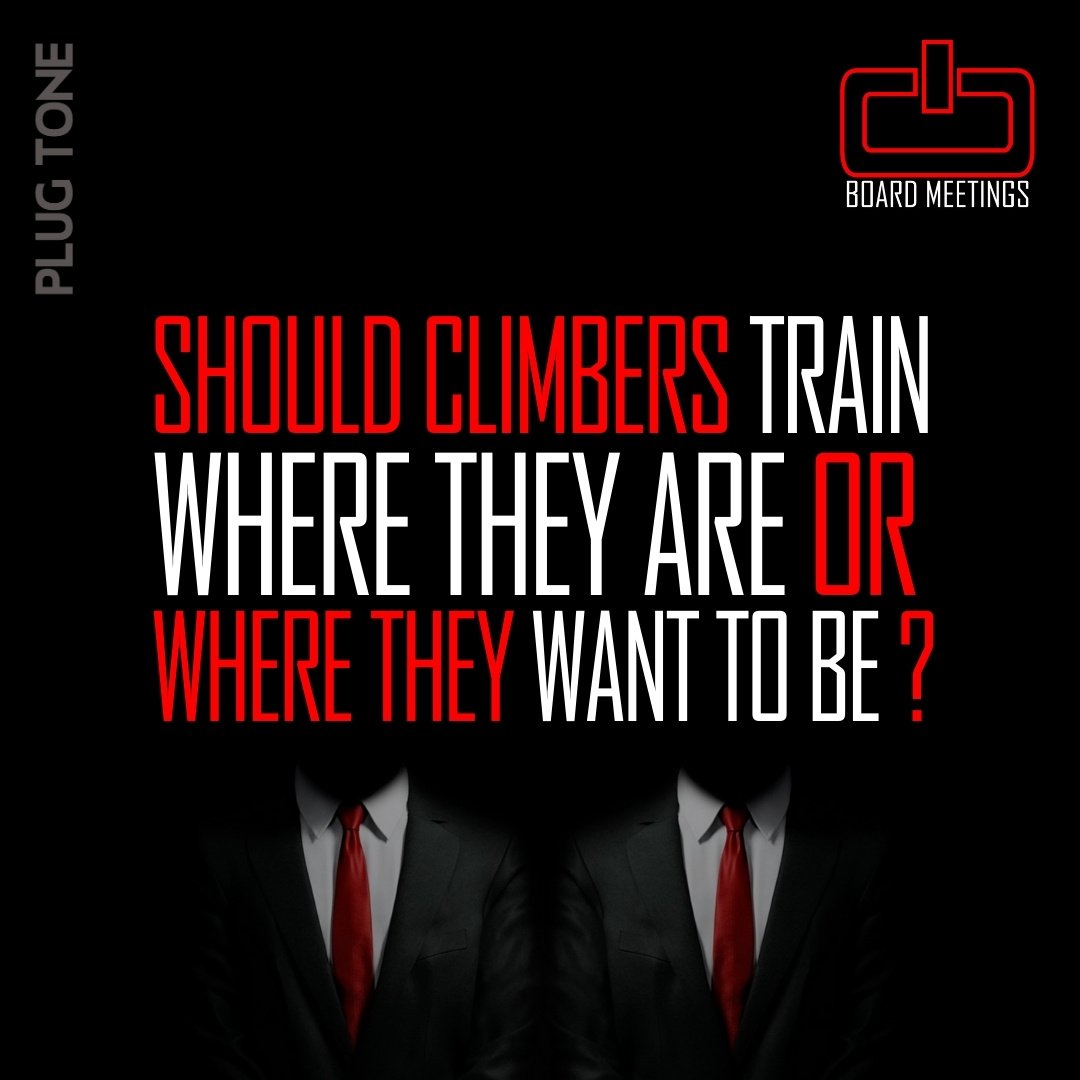



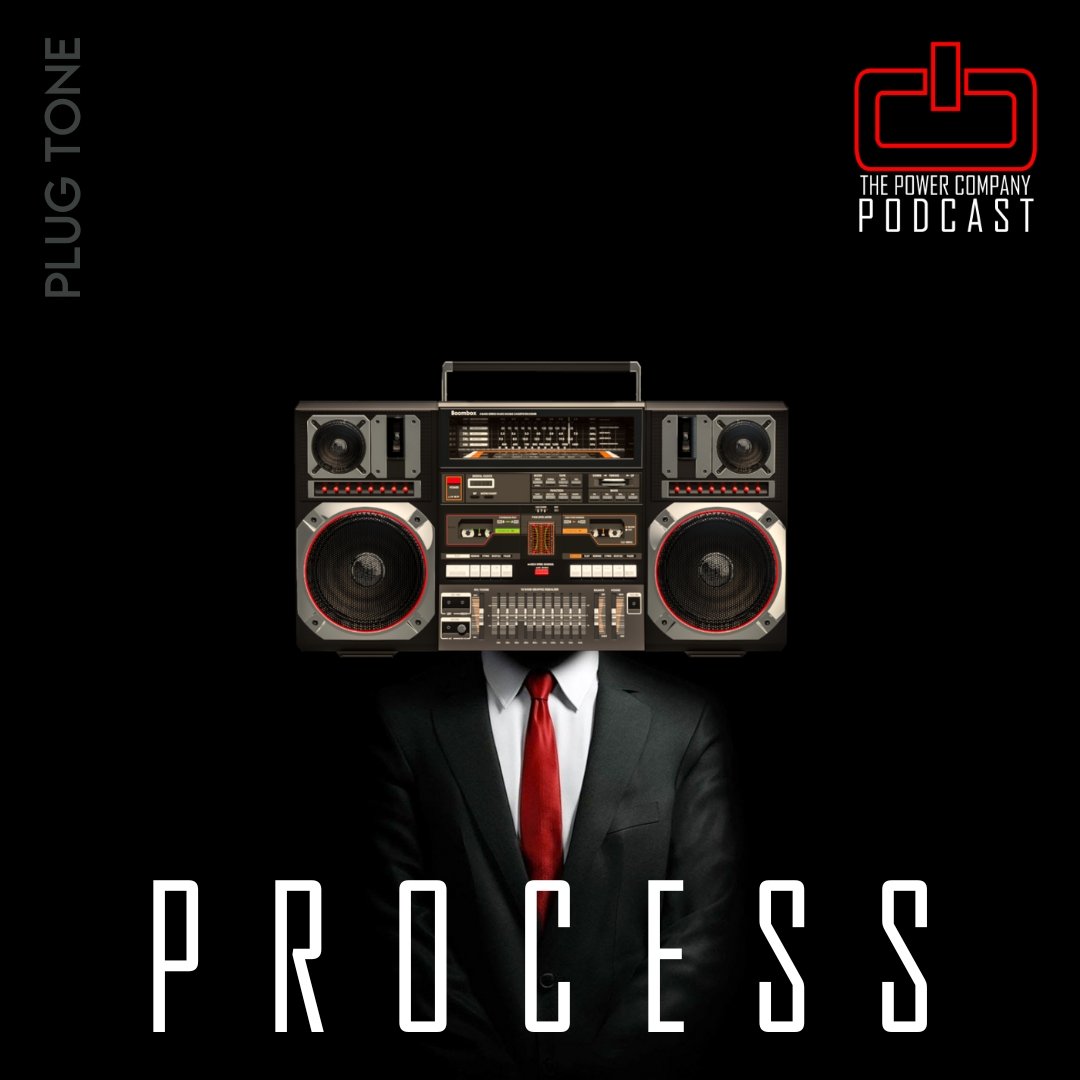
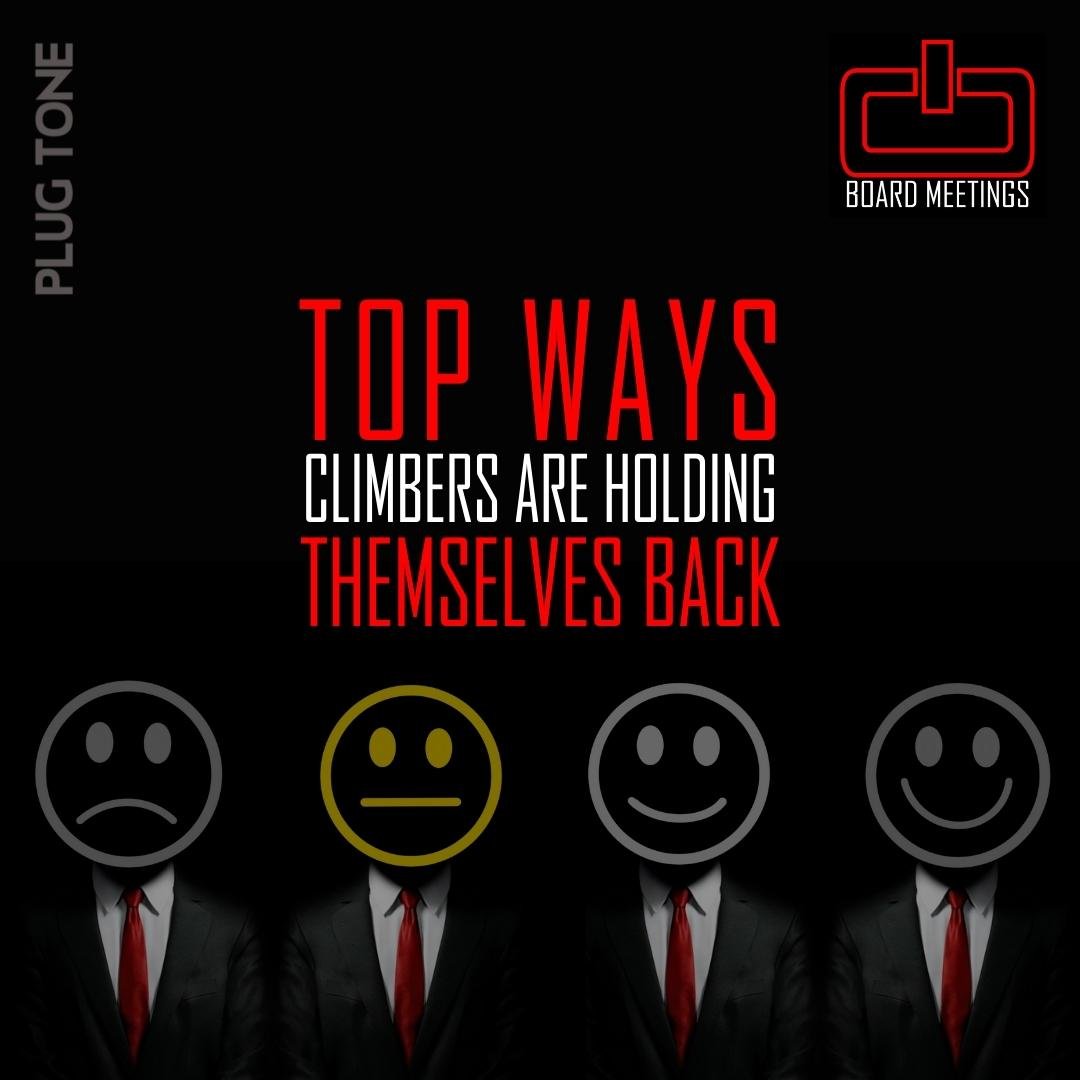
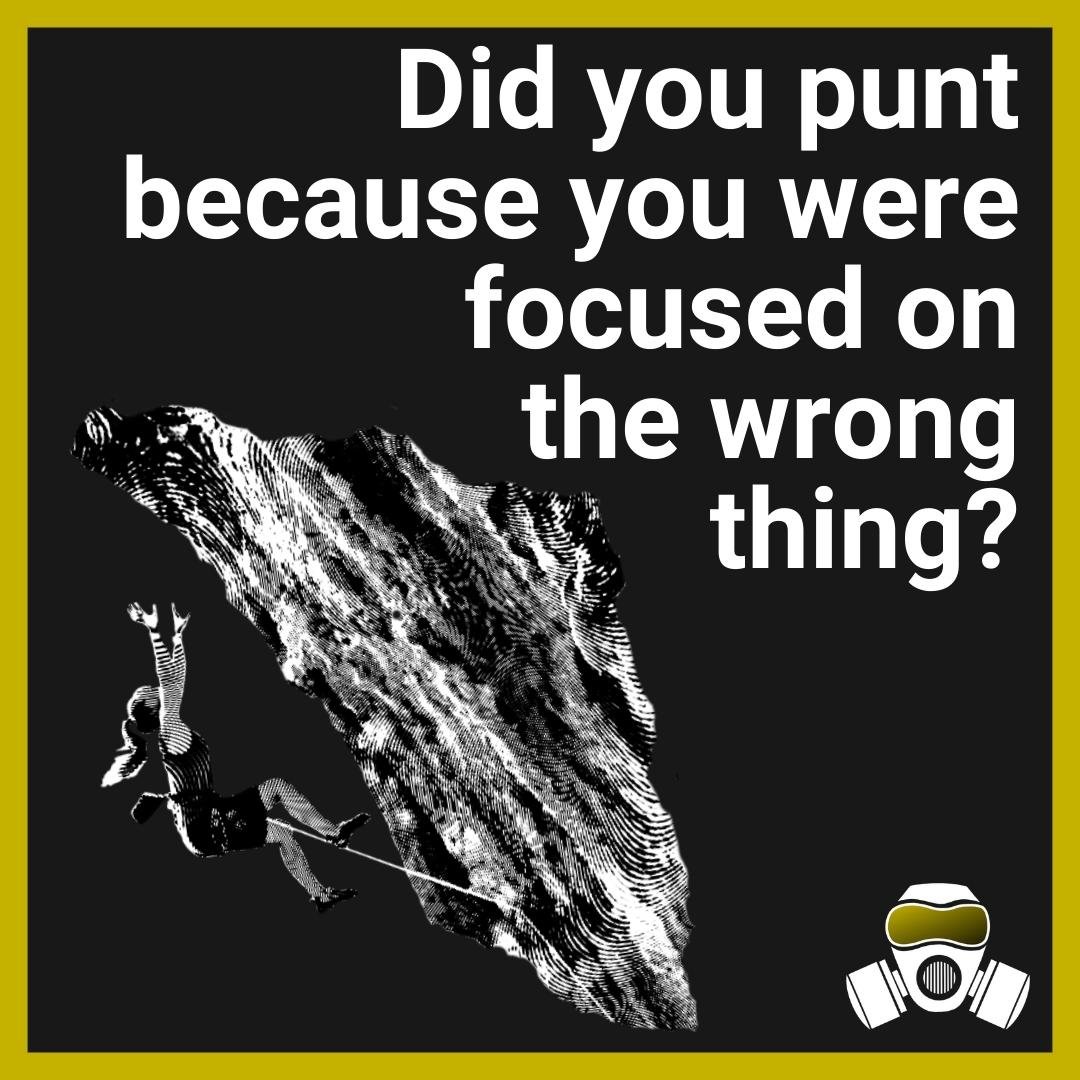
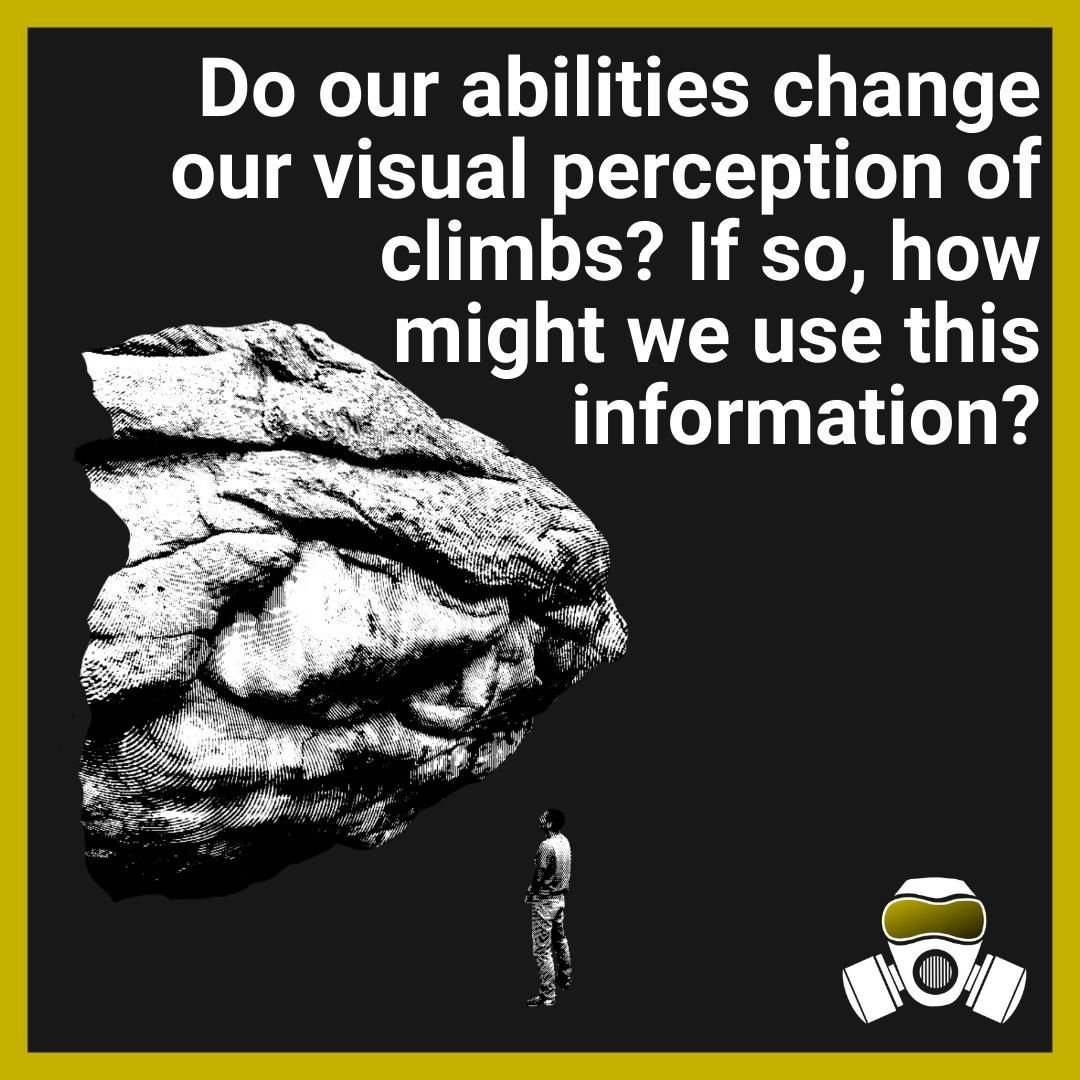
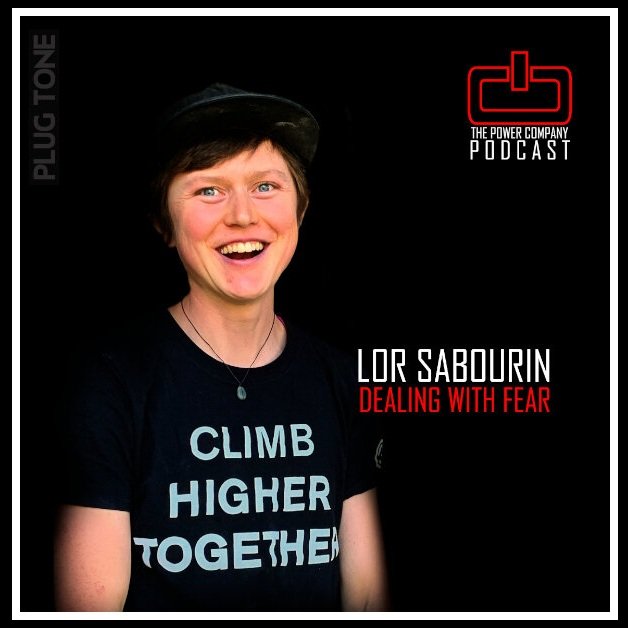









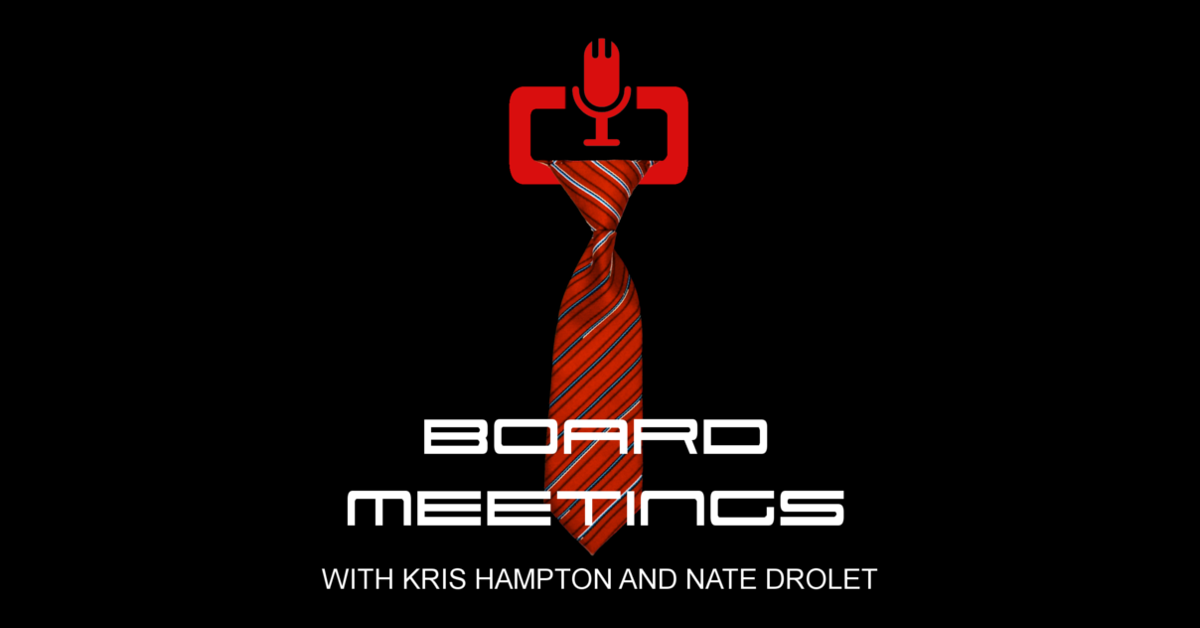




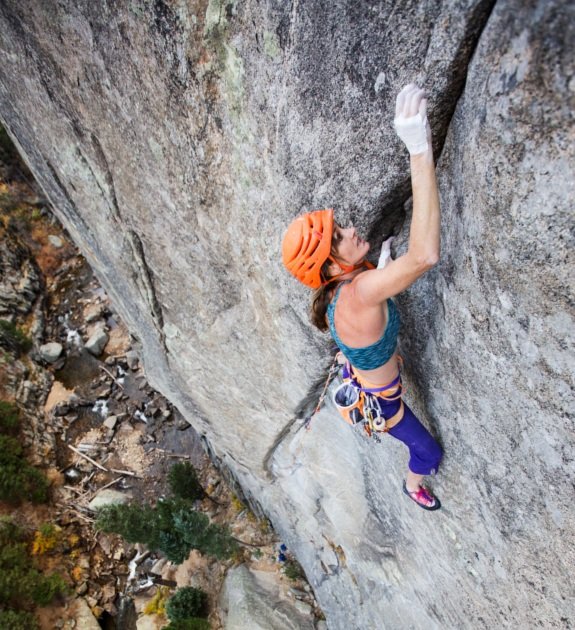





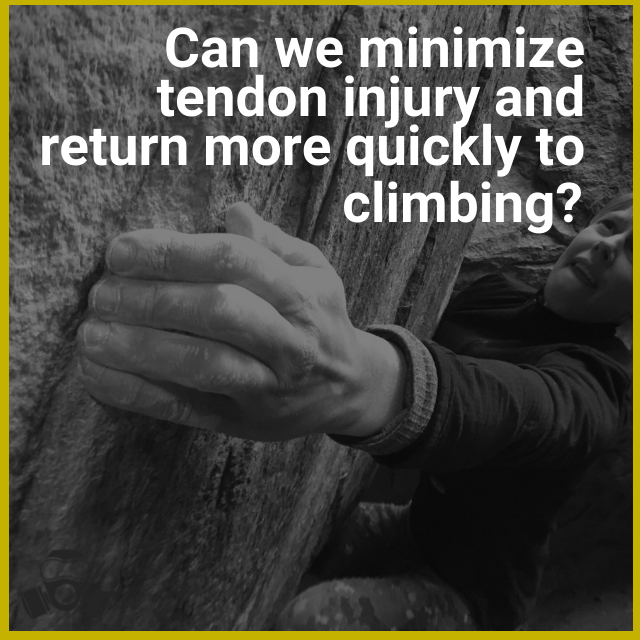
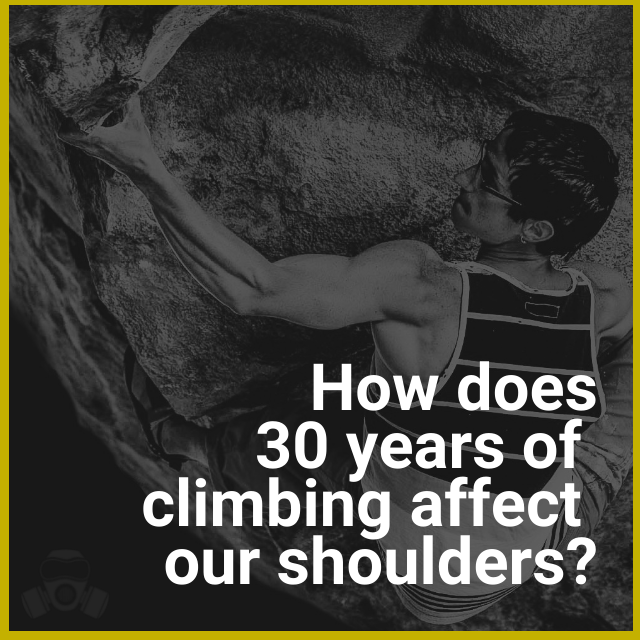
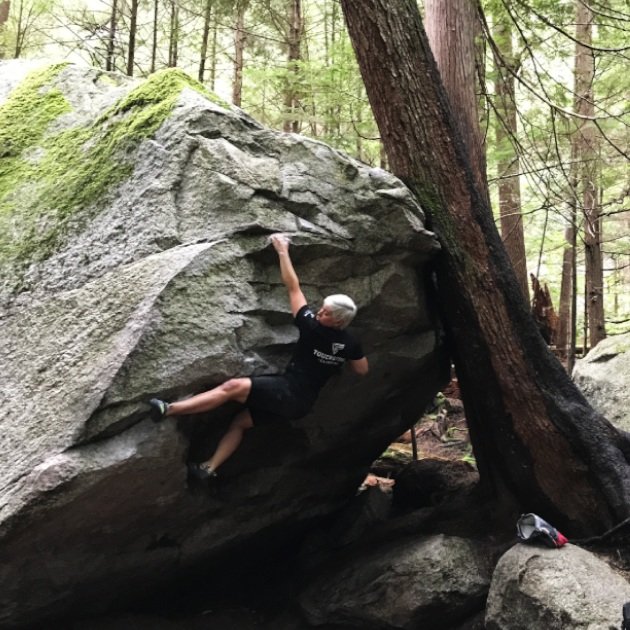
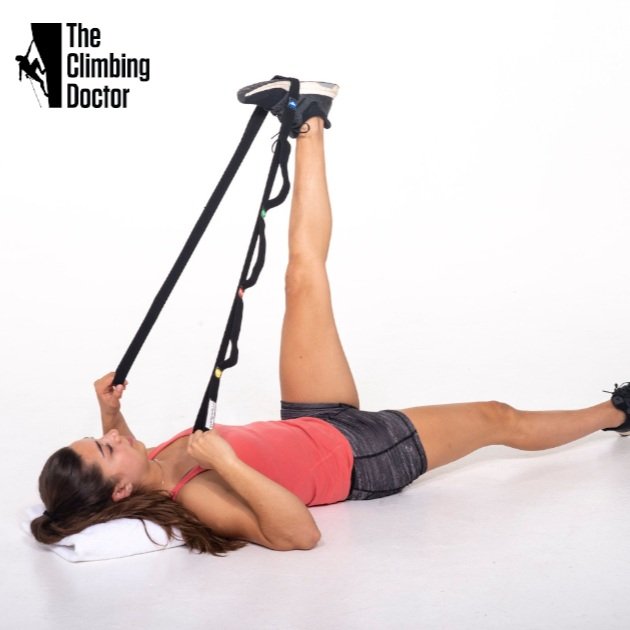

How do you know which is right for your situation?